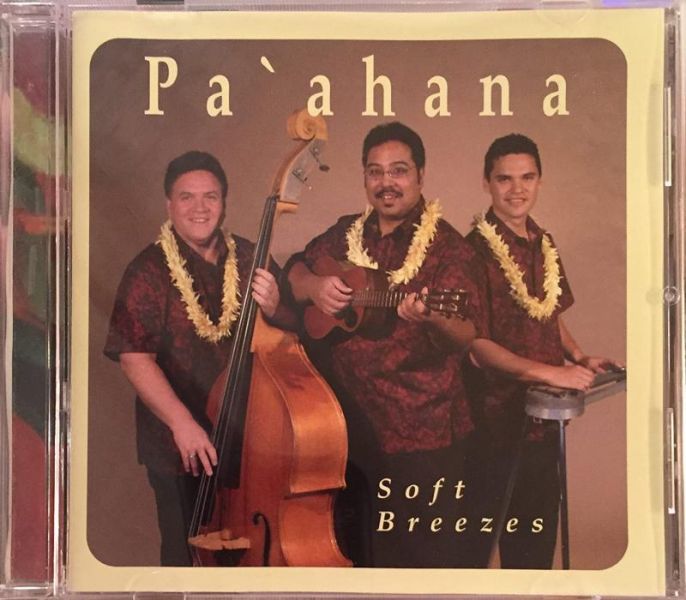Digital Collections
Celebrating the breadth and depth of Hawaiian knowledge. Amplifying Pacific voices of resiliency and hope. Recording the wisdom of past and present to help shape our future.
Kīhei de Silva
Those of us who treasure the unamplified Hawaiian music of our nahenahe past will find much to be thankful for in Pa‘ahana’s Soft Breezes. We give thanks that young men are still capable of making such beautiful, old music; we give thanks, too, that their interests are far more kūpuna than corporate. Behind Pa‘ahana, clearly visible over their shoulders, are the aunties Farden and the uncles K, Randy, and Barney. Music of this sort takes dedication and humility; it requires a lifetime of attention to what’s been taught and unwavering loyalty to those who teach it. The quiet diligence of Douglas Tolentino, Pakala Fernandes, and Kaipo Kukahiko has resulted in a seemingly effortless, soft breeze of a first release, one characterized by elegance and understatement—the epitome of nahenahe. Pa‘ahana is Kahauanu Lake with a touch of Apaka, Oness, and Isaacs. Pa‘ahana is a gentleman’s equivalent of the ladies of Auntie Irmgard’s Puamana. Pa‘ahana is a trio of strolling musicians at sunset on the kamaʻāina lawn of our collective memory.
Soft Breezes contains 14 songs. The ear is immediately drawn to its classic songs rendered in an impeccably classic manner: “E Maliu Mai” as taught by Auntie Irmie, “Ginger Memories” as shared by her sister Edna, “Nani Venuse” as arranged by Uncle K., and “Iā ʻOe e ka Lā” as taught by his cousin Keola. The collection also includes two new compositions: “Kailua” by Jason Manuwai Mejia and Douglas Tolentino, and “Hale ‘o Keawewai” by Paul Nāhoa Lucas. The former extols the beauty of Kailua, Oʻahu, from Coconut Grove and Kawainui in the west to Kalama in the east.
Onaona ʻo Kalama
I ke ʻala a ka ʻehukai
Ke one o Kākuhihewa
Kahakai kū i ka laʻi
Kalama is perfumed
By the fragrant sea spray
The sands of Kākuhihewa
Its shoreline resplendent in the calm.
The latter describes “friendships shared during memorable trips to ‘Keawewai,’ a cabin on the slopes of Keauhou on the Big Island of Hawai‘i. Visitors go to experience the Kamehameha Schools Koa Reforestation Project with Director Eli Nahulu and staff”:
Kilohi au i ka nani
O Keauhou i uka
Mai ke kilihune uhiwai
Kapalili lau o ke koa
I gaze at the beauty
Of Keauhous uplands
From its light, mist enshrouded rain
To its trembling leaves of koa
The language of these songs is clean, unpretentious, image- and allusion-rich, and familiar to the listener in a way that is anything but clichéd. The familiarity, instead, is that of a just-met family member with whom the connection is immediate and intimate. So, too, with the music of these mele; Pa‘ahana is remarkably consistent in its delivery of songs, old or new, and in defining itself as a fresh but oh-so-familiar voice on the Hawaiian music scene. Upon listening to “Kailua” and “Keawewai” for the first time, one falls easily into thinking, “Ho, I haven’t heard that song in a long time.” This paradox of old but new is what makes for the ʻono of Pa‘ahana; theirs is not candy for their ear; theirs is a far more substantial, authentic, and nourishing food for the Hawaiian soul.
